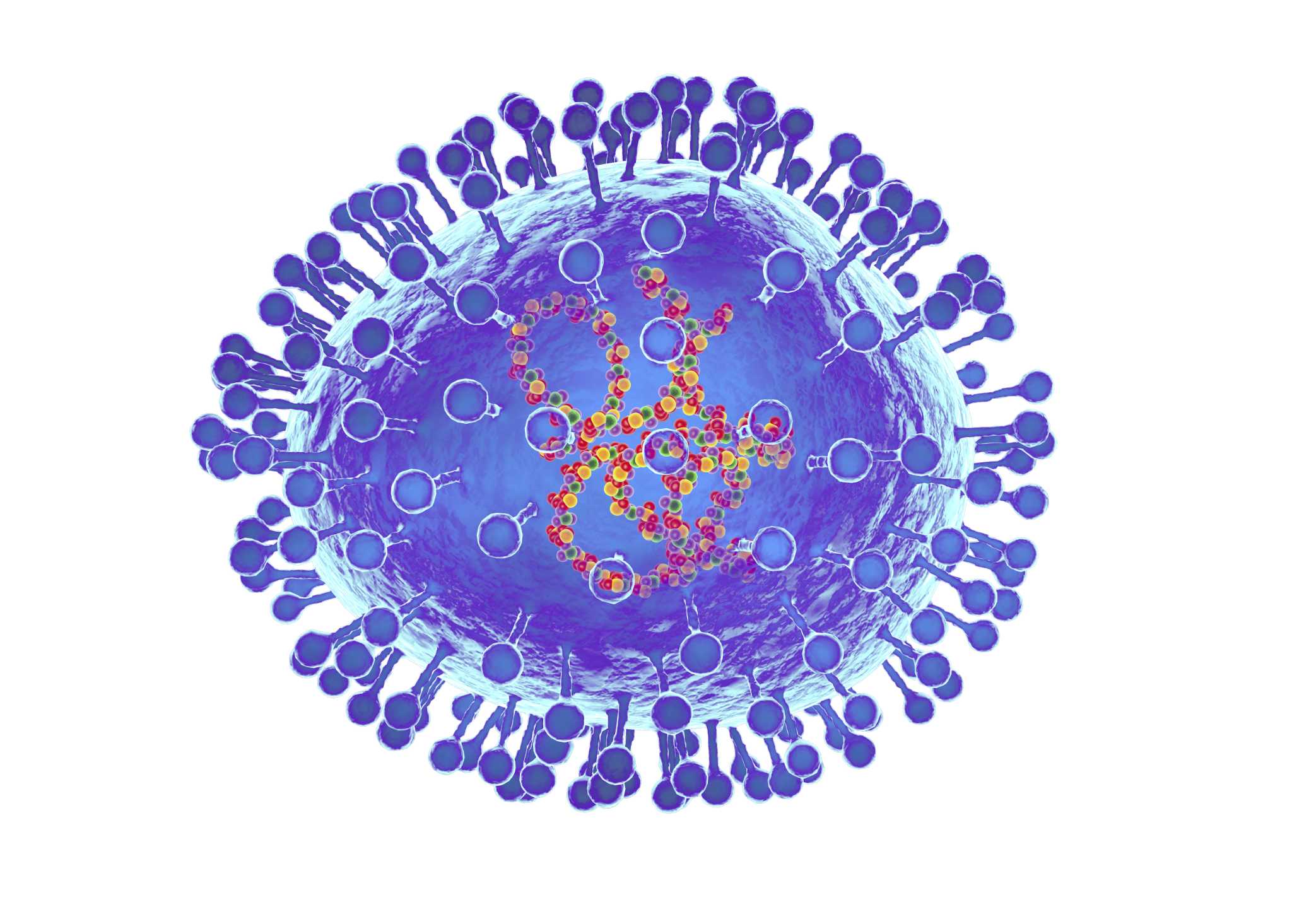

The recent detection of the Human Metapneumovirus (HMPV) in India has sparked fears of a potential new outbreak similar to the COVID-19 pandemic. However, medical authorities assure the public that HMPV has been circulating globally for years and is not a new virus. While three cases have been reported in India, there is no need to press the panic button as there has been no unusual surge in respiratory illness cases in the country. Karnataka's Health Minister Dinesh Gundu Rao stresses that this is not the first case of HMPV in India and it is not something new.
Human Metapneumovirus (HMPV): An Overview
Human Metapneumovirus (HMPV) is a common respiratory virus that causes infections in both children and adults. It was first discovered in 2001 and has since been identified as a leading cause of lower respiratory tract infections (LRTIs) worldwide.
Background
HMPV is a member of the Pneumoviridae family of viruses, which also includes the respiratory syncytial virus (RSV). It is primarily transmitted through respiratory droplets when an infected person coughs or sneezes. The virus can also be spread by touching contaminated surfaces or objects.
Symptoms of HMPV Infection
HMPV infection typically causes symptoms similar to the common cold, including:
In more severe cases, HMPV can lead to pneumonia, bronchiolitis, and other LRTIs. Infants, young children, and immunocompromised individuals are at higher risk of developing severe complications.
Recent Detection in India
In January 2023, three cases of HMPV infection were reported in India. This raised concerns about a potential new wave of respiratory illness similar to the COVID-19 pandemic. However, health authorities have assured the public that HMPV has been circulating in India and globally for years and is not a new virus.
FAQs
1. Is HMPV a new virus?
No, HMPV was first discovered in 2001 and has been circulating globally since then.
2. Is HMPV as dangerous as COVID-19?
HMPV typically causes milder symptoms than COVID-19, and the risk of severe illness is generally lower. However, infants, young children, and immunocompromised individuals are at higher risk.
3. Are there any specific treatments for HMPV?
There are no specific antiviral treatments for HMPV. Treatment focuses on managing the symptoms and preventing complications.
4. How can I prevent HMPV infection?
Preventive measures for HMPV are similar to those for other respiratory viruses, including:
5. Should I be worried about a potential HMPV outbreak in India?
The three cases reported in India do not indicate a significant surge in HMPV infections. Health authorities are closely monitoring the situation, and there is no need to panic at this time. Individuals who experience severe respiratory symptoms should seek medical attention promptly.

Indian Prime Minister Narendra Modi virtually inaugurated Skyroot Aerospace's new Infinity Campus in Hyderabad and unveiled their first orbital launch vehicle, the Vikram-I. During the event, PM Modi praised India's advancements in space technology and spoke about the importance of private companies like Skyroot in driving innovation in the space sector. The Infinity Campus, equipped with state-of-the-art facilities, has the capacity to produce one rocket per month, marking a significant milestone in India's private space manufacturing capability. Skyroot Aerospace, founded by former ISRO engineers, has quickly become a prominent player in India's growing space industry, with the successful launch of Vikram-S, the country's first privately built sub-orbital rocket.

We all experience changes in our mood, whether it's feeling happy and content or irritated and moody. But what are the underlying factors that contribute to these changes? This article from Medindia explores the top 10 things that can affect our mood, from physical health to environmental factors. It also provides tips on how to avoid these mood-altering triggers and maintain a positive state of mind. With a focus on promoting overall well-being, Medindia's policies align with the UN's Sustainable Development Goals, making it a reliable source of information for health and wellness.

A recent report by Public Health Scotland has shown a steep increase in flu cases and hospitalizations in Scotland. The numbers have more than doubled from the previous week, with a higher intensity observed in younger age groups. Experts are warning of a long flu season and a new variant of the illness that is spreading more easily. Health Secretary Neil Gray has assured the public that there are enough doses of flu vaccine available in the country.

The observation of National Pollution Control Day on 2 December serves as a timely reminder of India's struggle with escalating pollution levels. The recent years have seen a sharp increase in toxic particles and hazardous emissions, causing severe health issues and environmental damage. The ongoing pollution emergency calls for more stringent regulations, better urban planning, and increased public engagement to mitigate the crisis.

As World AIDS Day approaches, conversations around HIV prevention in India are becoming more open and informed. In particular, there is growing interest in PrEP (pre-exposure prophylaxis), a medicine that offers strong protection against HIV when used correctly. With rising awareness and more accessible sexual-health services, doctors are seeing a steady rise in patients asking about PrEP as a proactive health choice. This signals a shift towards informed prevention and a stigma-free dialogue surrounding HIV.

ISRO has been making continuous efforts to establish contact with the Vikram lander and Pragyan rover, which were put into sleep mode earlier this month, ahead of the lunar night. However, the prolonged spell of cold weather conditions, reaching up to -150 degrees Celsius, has made it difficult for them to wake up. With the sunrise on the Moon's south polar region and their solar panels believed to be optimally charged now, ISRO is hoping to revive the lander and rover and continue with their experiments and studies. The latest update from ISRO is that the plan to reactivate them has been delayed to September 23 due to the extreme lunar weather conditions.

Monsoon season may bring romantic vibes, but it's also a nightmare for contact lens wearers. Rainwater contains bacteria and pollutants that can cause eye infections, especially when wearing contact lenses. Ophthalmologists recommend using glasses instead and practicing good hygiene to avoid irritation and infection.

India's first human spaceflight mission, Gaganyaan, is one step closer to reality as ISRO successfully tested the main parachutes for the mission's Crew Module. The test, conducted at the Babina Field Firing Range in Uttar Pradesh, is part of the qualification process for the Gaganyaan parachute system. The system, which includes 10 parachutes of different types, is designed to ensure the safe and stable descent of astronauts returning to Earth. This milestone test marks a crucial step forward for India's ambitious space exploration goals.

As World Pneumonia Day is observed on November 12, experts are drawing attention to the dangerous link between air pollution and respiratory illnesses. In India, the post-Diwali smog adds to the already high levels of pollution, increasing the risk of pneumonia, particularly among vulnerable populations. While outdoor air pollution is often blamed, experts emphasize that poor indoor air quality also plays a significant role in triggering and worsening respiratory infections. Health professionals are urging for better air quality regulations and precautions to prevent this deadly connection between pollution and pneumonia.

On November 12, 2025, the world will once again mark World Pneumonia Day, a global health observance highlighting the urgent need to combat one of the leading causes of death, especially in young children. Despite being preventable and treatable, pneumonia continues to claim millions of lives each year, but efforts such as the ‘Every Breath Counts’ coalition and the Global Action Plan for the Prevention and Control of Pneumonia and Diarrhoea are working towards reducing preventable deaths through vaccination and improved healthcare access. Let us continue to raise awareness and take action against this preventable killer.